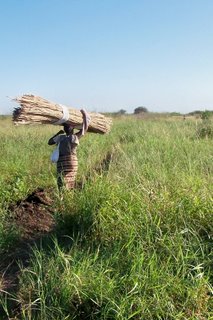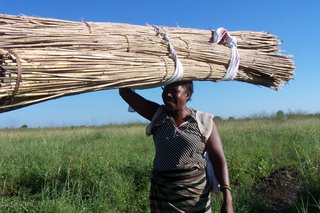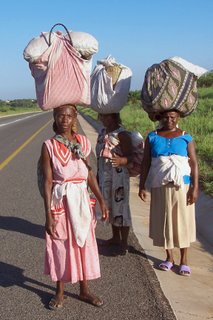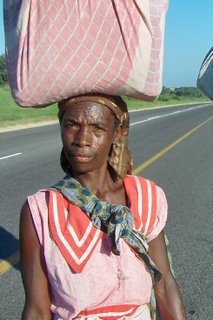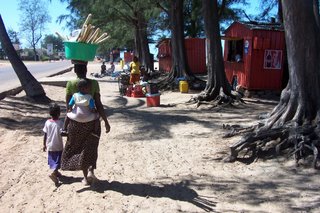VILAKAZI STREET, SOWETO TOWNSHIP, SOUTH AFRICA: THE (RELATIVELY UNKNOWN) MICHIGAN CONNECTION!
First of all, it is not unique in any way; it's rather ordinary looking. When I say ordinary, I mean that in the context of it being a street in Soweto, located to the west of Johannesburg. This is not an ordinary street though!
Vilakazi Street is the ONLY street in the world that can boast two Nobel Prize winners having lived there at one time. They are none other than Nelson R. Mandela (known fondly as "Madiba", the name which was given to him by his family, meaning head of said family). One could take that simple title and run with it relative to the new nation of South Africa and his revered status here.
The other Nobel Prize winner, also awarded for his work toward peace, is Archbishop Desmond Tutu. And the respective homes they lived in (at different times), are really very close to each other! Both are rather indescript, not noteworthy in any way. They are simple in construction--made of brick and only one story tall. Both are small, well-kept homes, just like others in that area of Soweto.
The Mandela House, as it is now known, is open to the public--mostly tourists. They stream in from all over the world...including Flint, Michigan, U.S.A. That visitor, really not a tourist, would be me, of course.
The South African Fulbrighters were taken to Mandela's home on the second day of our arrival here. There are, of course, four of us. On a personal note, I must thank Monica Joi, for her wonderful sense of knowing what was important for us to see and experience during our first couple of days in South Africa. Monica worked for the Fulbright Commission in S.A. Her insights, keen knowledge, and love of humanity left an indelible impression on all of us.
The home is still very much like it was when he lived there with his then wife, Winnie. A big difference is the fact the home is now filled with awards and honors from the time period of his Nobel Peace Award. The walls are literally dripping with certificates, awards, honorary doctorate degrees, etc. Notebly, they are from every corner of the world.
While visiting the impressive building, I happened to notice a State of Michigan Special Tribute to Madiba...Nelson Mandela. It was the ONLY such special tribute to honor the man. The tribute was an official apology to Nelson Mandela from the Michigan Legislature. The legislature apologized to Mandela for the Central Intelligence Agency's alleged assistance to South African intelligence agents in their apphrehension and arrest of him in 1962. Mandela's arrest and subsequent trial resulted in him spending nearly 28 years in South African prisons.
It's an amazing document that made me stand proudly as a citizen of the great state of Michigan! And I might add, no other state legislature, or ANY arm of our government in the United States, issued such an official aplology. I openly pointed the special tribute out to my fellow Fulbrighters...and other Americans who happened to be in the room with me. I also proudly announced that I personally knew one of the signers of the tribute. It was signed by a fellow Flint citizen and friend, Representative Robert L. Emerson, a member of the State of Michigan 85th Legislature. It is dated June 28, 1990, and is signed by over twenty legislators--including the well-known, at times controversial, Representative Perry Bullard.
The document was a political statement by those signers. It was signed during the presidency of George Herbert Walker Bush--father of GW, the present George in the White House. It took political courage to make such a statement. More importantly, it took personal courage on the part of all those brave, intrepid signers.
So, there it is and there it will remain: a political statement hanging on a wall in an obscure, little home on Vilakazi Street, in Soweto Township, South Africa. I couldn't help but notice the room it is in is not well lit...one could quite easily miss seeing or reading the tribute. Too bad, because it should have a spotlight on it to illuminate the bold language and the names of the signers. Once seen though, the document should be a beacon of light in the heart of the reader. It is just that for me.




